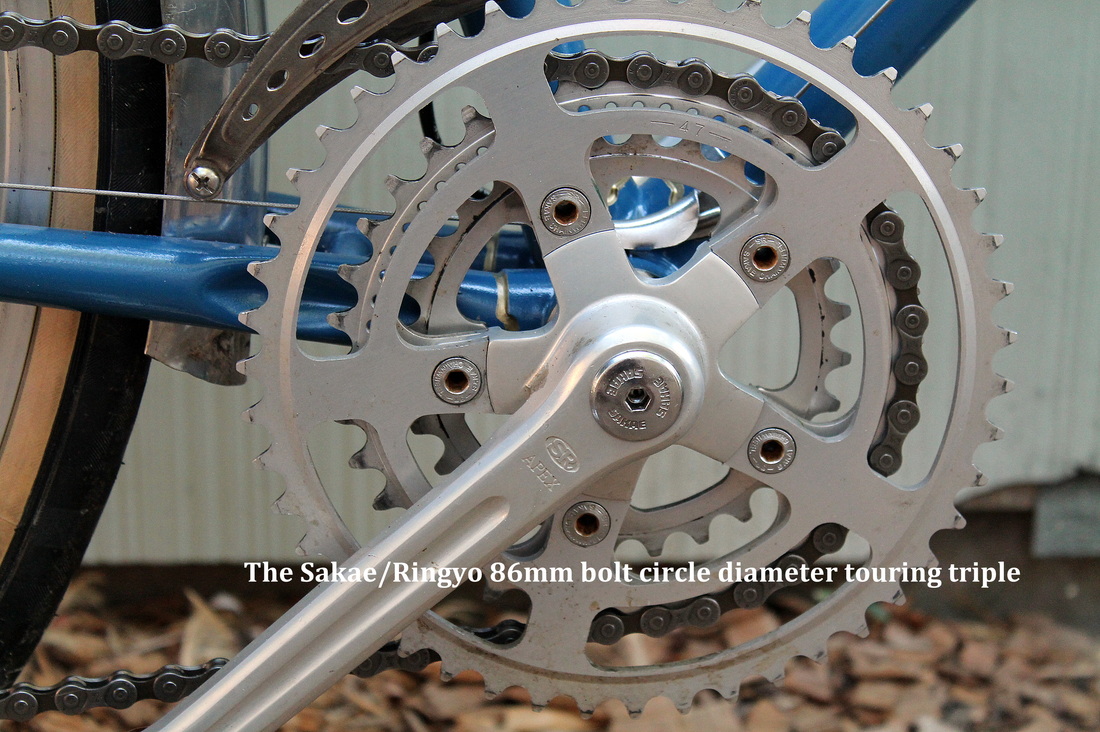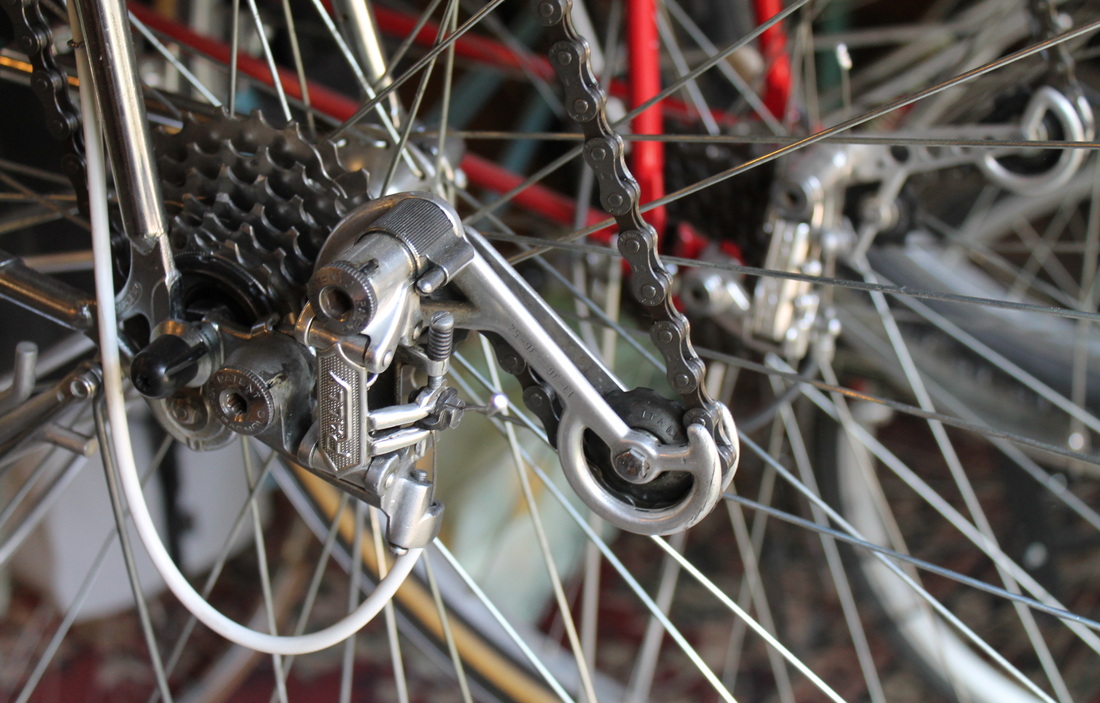"While covering the 2016 Tour de France, the CyclingTips team was fortunate enough to stay at an AirBNB property in Viviers owned by Richard Leon. With 25 beautiful bikes in his collection and many stories to tell, it was a pleasure to spend some time with this engaging and philosophical long-distance cyclist."
--Dave Everett, Cyclingtips
|
The CyclingTips crew lucked out when they booked an Airbnb while covering the 2016 Tour de France. Their accommodations offered so much more than a place to sleep! Check out thestory, video, and some great pictures from Richard Leon's Airbnb in the village of Viviers. Situated along the Rhone River, Vivers is in the Ardeche region of south-east France. I had the pleasure of spending a little time there on a three-month cycling tour back in the late 80s. Unfortunately, my trip predated Airbnb by a couple decades.
0 Comments
Here's a couple of interesting Japanese video commercials. The first is a promo for a shop specializing in vintage American bikes and features three classic rides. It opens with a late 60s Stingray 3 speed Deluxe followed by a lemon colored Schwinn Breeze Deluxe. And last up is a Montgomery Wards Hawthorne which is a rebadged Monark Silver King. This is an aluminum frame bicycle from the 30s or 40s, I remember seeing one of these at a yard sale in the Belmont Shore area of Long Beach, CA. Who knew there were American made aluminum bicycles in the 1930s? I converted the yen to dollars, and the prices seem fair. The Breeze, which is the most common of the three, comes in at around $625 at today's conversion rate. The Stingray is about $1500 and the Hawthorne/Monark $2500. The next video is a heartwarming 1970s advertisement from Matsushita National (Panasonic) Bicycle of Japan. It's a moving story of two brothers. The older brother is an angry lad in short pants, resentful of his cuter and better dressed little brother. He's charged with the task of teaching his younger brother how to ride this super terrific happy gizmonic bike. Things do not go well. But just when it appears all hope is abandoned, the older brother makes one last convincing threat which does the trick. They finally reconcile after the younger boy rides off into a brownfield site, a bit wobbly but upright. Great joy ensues. I love this bike... dual headlights, taillights, stick shift, front/rear racks. There seems to be some sort of thumb shifter up by the right grip. Not sure what that's about given the toptube stick shifter. Whatever, this thing is busier than a blue fly on pie! I added a couple additional pics of this style bike for your viewing pleasure. I recently resurrected a vintage Japanese racing bicycle, setting it up for my 13 year old daughter. It came to me basically as a frame with a crankset and a few clamp-on bits attached. It’s a quality frame with thin wall chromoly tubing and relaxed, comfortable geometry – very light.
My daughter had outgrown her mixte and she needed a new townie. This looked like a good candidate but first I wanted to convert it from its intended wheel size of 27” to a 650B for the comfort and to get clearance for fenders. The Sugino Mighty Competition crankset that came affixed to the frame was no doubt original equipment on this ‘72ish bicycle . The Mighty is a top quality vintage component. Unfortunately, the BCD (bolt circle diameter) is very large at 144mm. (For more info on bolt circle diameter, check out the late great Sheldon Brown’s excellent explanation!) I wanted to put a vintage crankset on this bike, but the Sugino’s 144mm would not permit chainrings small enough for how she plans to ride. So I needed to pick something generally period in a double or triple with a small bolt circle diameter. Back when many production bicycles and their components were made in Europe, there were plenty of proprietary fittings. This was especially true with cranksets. Different manufacturers used different bolt circle diameters - not to mention spindle tapers and pedal or dust cap threading. After a couple of fits and starts, I landed on and old SR triple with a BCD of 86mm. The 86mm pattern was originated by the French company, Stronglight, and picked up by the Japanese company SR (Sakae/Ringyo). I have long appreciated the 86mm crankset. It can handle a ring as small as 28 teeth and works well as a double or triple. Unfortunately, the pattern did not catch on and after just a few years, both Stronglight and SR abandoned it. In an industry where everything old is new again the 86BCD crankset is on my list of things to take up again. I think the friction/indexed debate has become a little passé. Although, I am probably not the person to declare such a thing. Frankly, I’m profoundly indifferent on the matter these days. I can work with friction on five and six speeds, and maybe seven. Actually five and six speed is probably where I would prefer to draw the line. But my Mercian touring bike and my daily commuter are both indexed 8 speeds. I prefer eight speed over nine, ten, or, God forbid, eleven! (The competition to add cogs to the cluster reminds me of the competition between Gillette and Schick to see how many blades they can load onto a plastic shaving razor.)
I do miss the days before indexing and before Shimano ruled the world. There was a little more variety and that kept things interesting. The 70s and 80s brought us some very appealing and useful rear derailleurs. I’ve always been a tourer and commuter, not racer. And, thankfully, there were plenty of long-cage offerings during that period. Huret, Simplex, Campagnolo, Suntour, and Shimano all had respectable touring derailleurs. Suntour made some excellent derailleurs and I have logged a lot of miles on the old V-GT Luxe. This was a light and durable touring derailleur. I used the same V-GT Luxe for 5 or 6 years of serious loaded touring before finally breaking the cage tension spring somewhere in Utah. Even then I was able to disassemble and manipulate the broken spring enough to make it work until I could reach Park City and replace it. In addition to my experience, I would say there is general consensus that the Suntour V-GT Luxe was a fine derailleur. Not all vintage derailleurs have such broad support, however. The Huret Duopar is another touring derailleur from that era that is sometimes praised and other times maligned. Recently, I was helping a friend of mine outfit a commuter bike he’s building. It’s an early 80s Trek originally setup with a titanium Huret Duopar. This Trek and its Duopar came matched to a wheel built with a Maillard Helicomatic. Not an uncommon combination for the time. If you’re not familiar with the Helicomatic hub, look it up. I remember when they first came out and having a shop owner show me the ease with which the freewheel could be removed using nothing but a little bottle opener tool. The easy-off freewheel was intriguing for a touring cyclist. You see, replacing a rear drive-side spoke on tour meant you had to remove the freewheel to slide the broken spoke out and replace it with a new one. I’ve replaced a lot of spokes while on tour and often miles from civilization. To make this repair you had to carry a wrench big enough to fit the freewheel removal tool and give you the leverage necessary to break the freewheel loose. Something like a 10” Crescent wrench was the minimum requirement. With the Helicomatic you could use the bottle opener. Unfortunately, the hubs turned out to be marginal. I used one for a short time and broke spokes. So I was glad the freewheel popped off easily. The other part of this hub was the proprietary Maillard freewheel. Trek sold touring models in the early 80s that included a Helicomatic and Maillard freewheel matched with a Huret Duopar. Again, the Helicomatic had its issues, but the Maillard freewheel was perhaps the real weak link in this combination. The flat, non-profiled cogs on the Maillard spoiled the shifting performance of the Duopar. If you hear some old-timer complain about how poorly the Duopar shifted you could usually find a Maillard freewheel was an unmentioned part of that grievance. I’ve used the Duopar off and on over the years and I think it is a good derailleur. I currently have Duopars on my Woodrup and my old Raleigh Competition. When matched with the modern ramped and profiled cogs on a Shimano Hyperglide, it shifts like butter. This leads me to the conclusion of this rambling post. An important but sometimes overlooked variable in the quality of shifting is the freewheel of cassette. Because everything is indexed today, we take the profiled and ramped cogs for granted. But there was a time when French and Italian freewheel cogs were flat and square. Suntour freewheel cogs changed that. The teeth were tapered and sometimes slightly twisted to help grab the chain during gear changes. Not to take anything away from Suntour, but at least some of their reputation for great shifting originates with their improved freewheel design. So, next time you get into a debate about the comparative shifting quality of vintage derailleurs, be sure to check the freewheel. Not that I'm all about racing, but this is a fun short film of the 1937 Paris-Nice race. Not much to say except watch out for trains and enjoy! Oh yeah, and let's bring back wool jerseys with classic point collars and front pockets with buttons! |
Brian Loring
|












 RSS Feed
RSS Feed
